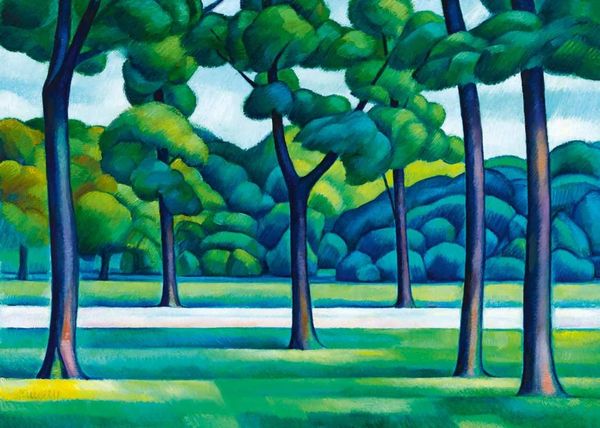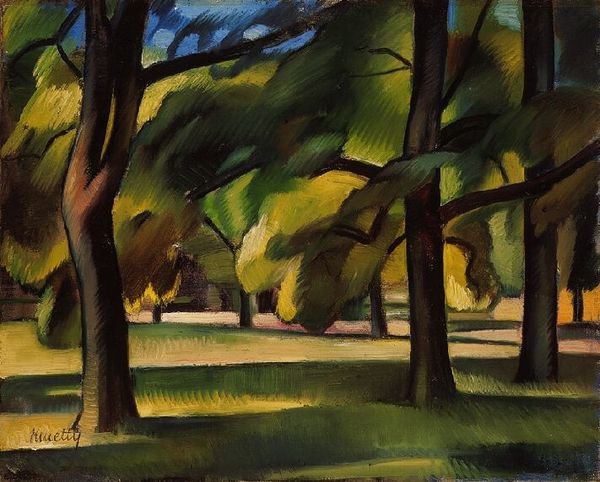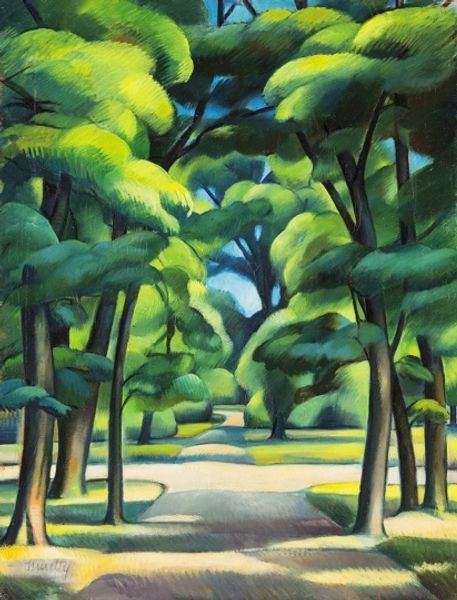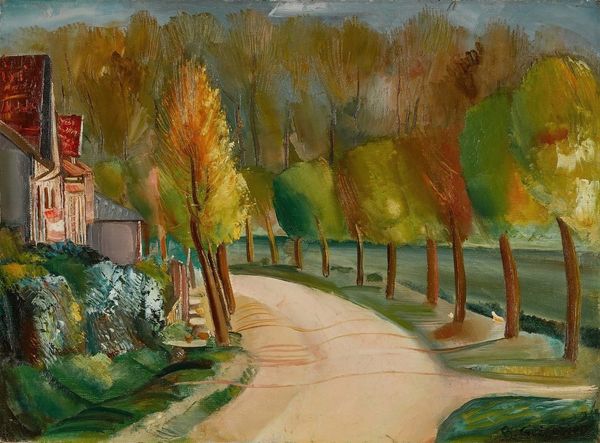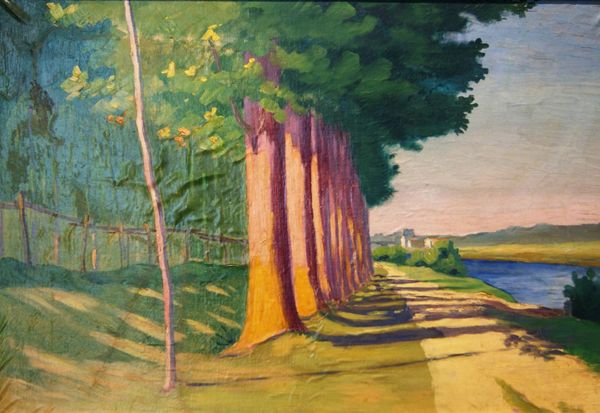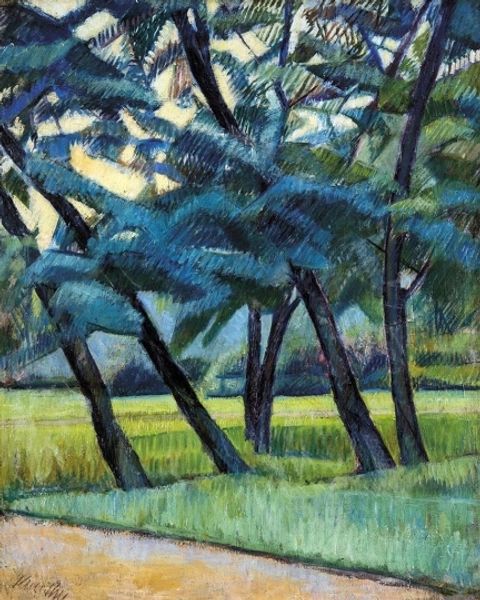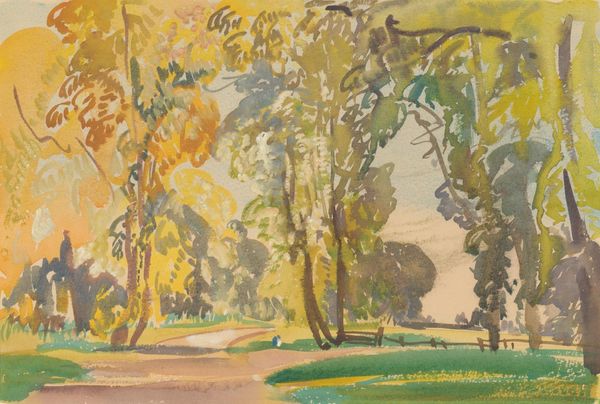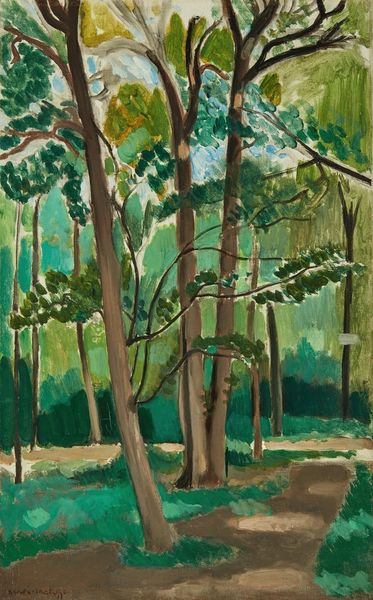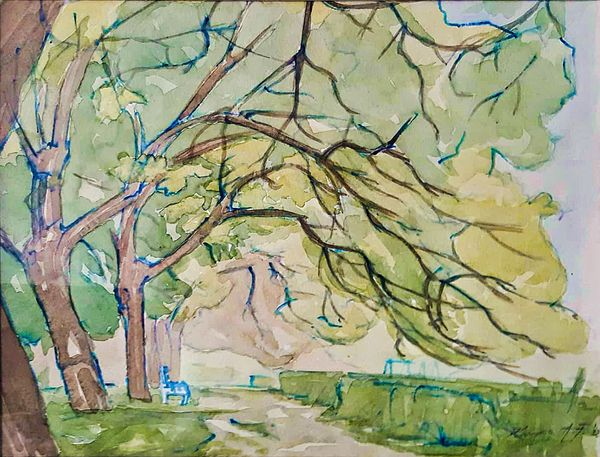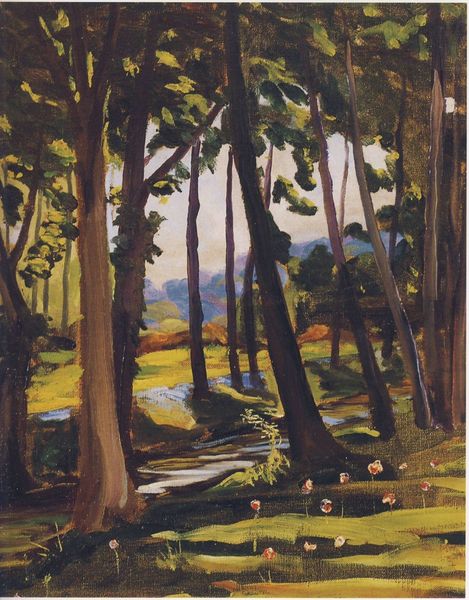
painting, plein-air, oil-paint
#
painting
#
plein-air
#
oil-paint
#
landscape
#
oil painting
#
geometric
#
expressionism
#
cityscape
#
modernism
#
expressionist
Copyright: Kmetty János,Fair Use
Editor: Here we have János Kmetty’s "City Park," created in 1917. It's an oil painting that seems to depict, well, a park! I'm struck by how geometric everything is, despite it being a natural scene. What's your take on this piece? Curator: Note how Kmetty orchestrates the interplay between line and mass. Observe how the tree trunks assert verticality, a stark contrast to the spherical foliage. This creates a tension—a dynamic visual rhythm. Do you see how the composition privileges structure over realistic representation? Editor: Yes, the trees are stylized, almost simplified into basic shapes. It’s not exactly what I’d expect from a park scene. Curator: Precisely. The painting refuses a direct transcription of reality. Instead, the artist constructs a new visual order. Consider the paint application itself—those distinct, deliberate brushstrokes. Do these convey a sense of movement, or something else? Editor: They seem controlled, contained. Like the whole scene is being deliberately ordered. Curator: Indeed. Kmetty is less interested in the park’s atmosphere and more in its underlying architecture. It's a re-imagining of a natural space, expressed through distinctly modern forms. Editor: So, it’s not just about the scene, but how it's put together and what that says about the artist's vision? Curator: Exactly. It is the painting’s internal language we must decipher; each element contributes to a greater understanding, regardless of its surface subject. Editor: I see the park in a totally different way now, focusing more on how it's made than just what it shows. Curator: An artwork provides unique insights, once we develop methods for extracting those insights.
Comments
No comments
Be the first to comment and join the conversation on the ultimate creative platform.
